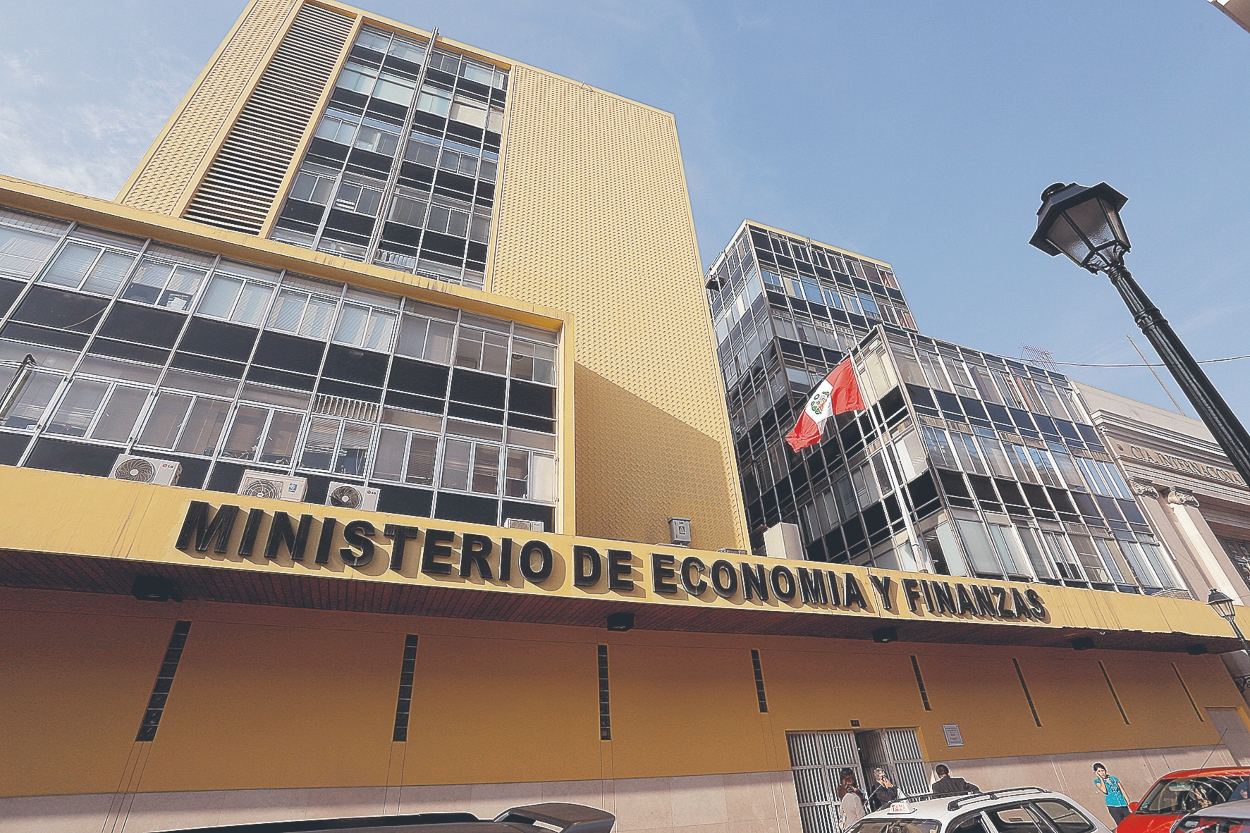
A week after requesting the departure of Carlos Oliva from the presidency of the Fiscal Council – an institution that ensures the transparency of public finances – the Ministry of Economy and Finance (MEF) updated its GDP growth forecast to 3.1% for 2024, but with a strong deficit component that will force it to launch a project to raise its fiscal ceiling.
This growth of 3.1%, higher than the 3% forecast estimated in the Multiannual Macroeconomic Framework 2024-2027 of August of last year, and in line with the 3.1% expected for the world average, responds to an “increase of exports, investment and private consumption”, according to the recent Macroeconomic Projections Update Report (IAPM). In 2023, the economy entered a recession and fell 0.6%.
However, none of these three ingredients will prevent the balance between what the country collects and what it needs to grow without eroding its accounts from continuing to widen. Thus, the MEF will present a bill to Congress – which, paradoxically, it blames in part for the situation – to “avoid a significant adjustment that compromises the recovery of the economy,” after reconfirming that the fiscal goal will be broken by second consecutive year in 2024 and will reach 2.5%.
“The scenario for 2024 is even more challenging due to the approval of legislative measures that reduce tax revenues and increase public spending, which create additional pressures on public finances,” recognizes the MEF.
Already at the end of last year, the MEF had problems not moving too far from the goal, which is why it had to dictate an early transfer of the profits of the Banco de la Nación to the Public Treasury.
The fiscal lifesaver
In days when Minister Arista extends his apologies for saying that the slowdown of the economy is the result of a “weak Government”, the former head of the MEF, Luis Miguel Castilla, points out that, based on 2.8% of deficit in 2023, reaching 2% in 2024 without putting pressure on public spending would require GDP growth of 4%, “something that, undoubtedly, will not happen.”
Let’s start with the goal in 2023 being 2.4%, but it closed at 2.8%. In 2024, the story will be the same and the 2% objective will close at 2.5%. Now, it is proposed to modify Law 31541, which sets these deficit limits, so that the goal goes from 1.5% to 2.2% in 2025; from 1% to 1.8% in 2026; from 1% to 1.4% in 2027; and that it will only converge to 1% in 2028.
“The sincerity, if we think carefully, is so as not to harm the recovery of the economy. But, probably, what is being done is to accommodate greater public spending by not being able to contain additional demands,” says the also director of Videnza Consultores.
Furthermore, Castilla maintains that it is preferable “to have realistic projections than ones that are not going to be fulfilled.” The issue, he explains, is what is going to be done with that additional space, since the resources could be used in a convergence plan faithful to the new rules, “or accommodate clientelistic spending that responds more to political motives.”
But growth, there will be. Economist Juan Carlos Odar cautiously sees the slight upward revision of the GDP “without yet having the growth data for the first quarter,” which is why he presumes that the average as of February (2.1%) was better than expected. , “and that the average between March and December will be 3.3%.”
However, he criticizes that the current Government is betting “a lot of weight on the public side instead of stimulating conditions to boost private investment,” a decision that could compromise it in the future.
“If private investment recovers, it is due to a mirror effect against a very strong fall. Even though we see indicators growing, if we compare them with levels from two or three years ago, it is low. What has grown is public demand, and that is today the engine of growth, but it limits you,” Odar clarifies.
March GDP comes with more problems
The leading GDP indicators for March, published this Tuesday by INEI, reveal that fishing fell 31.2%; electricity, 0.78%; cement consumption, 7%; and mining and hydrocarbons slowed from 15.9% to 2.6%.
In contrast, the Government’s investment spending (S/4,261 million) grew 10.68% compared to the same month in 2023, due to the increase in investment in machinery and equipment, as well as the greater execution of construction works.
The new fiscal trajectory proposal was approved in the Council of Ministers session on Wednesday of last week, and will be sent to Congress within the framework of the request for the delegation of legislative powers in economic matters.
Reactions
Juan Carlos Odar, Director. Phase Consultores
“What the Ministry of Economy is trying to do is push where it can. Instead of stimulating the private part, it goes to the public part, which is not sustainable.”
Luis Miguel Castilla, former Minister of Economy
“We have seen in the past that expanding fiscal spending has not been effective in mitigating the decline in private investment. If all efforts have not been exhausted, you are throwing in the towel.”
Source: Larepublica
Alia is a professional author and journalist, working at 247 news agency. She writes on various topics from economy news to general interest pieces, providing readers with relevant and informative content. With years of experience, she brings a unique perspective and in-depth analysis to her work.












